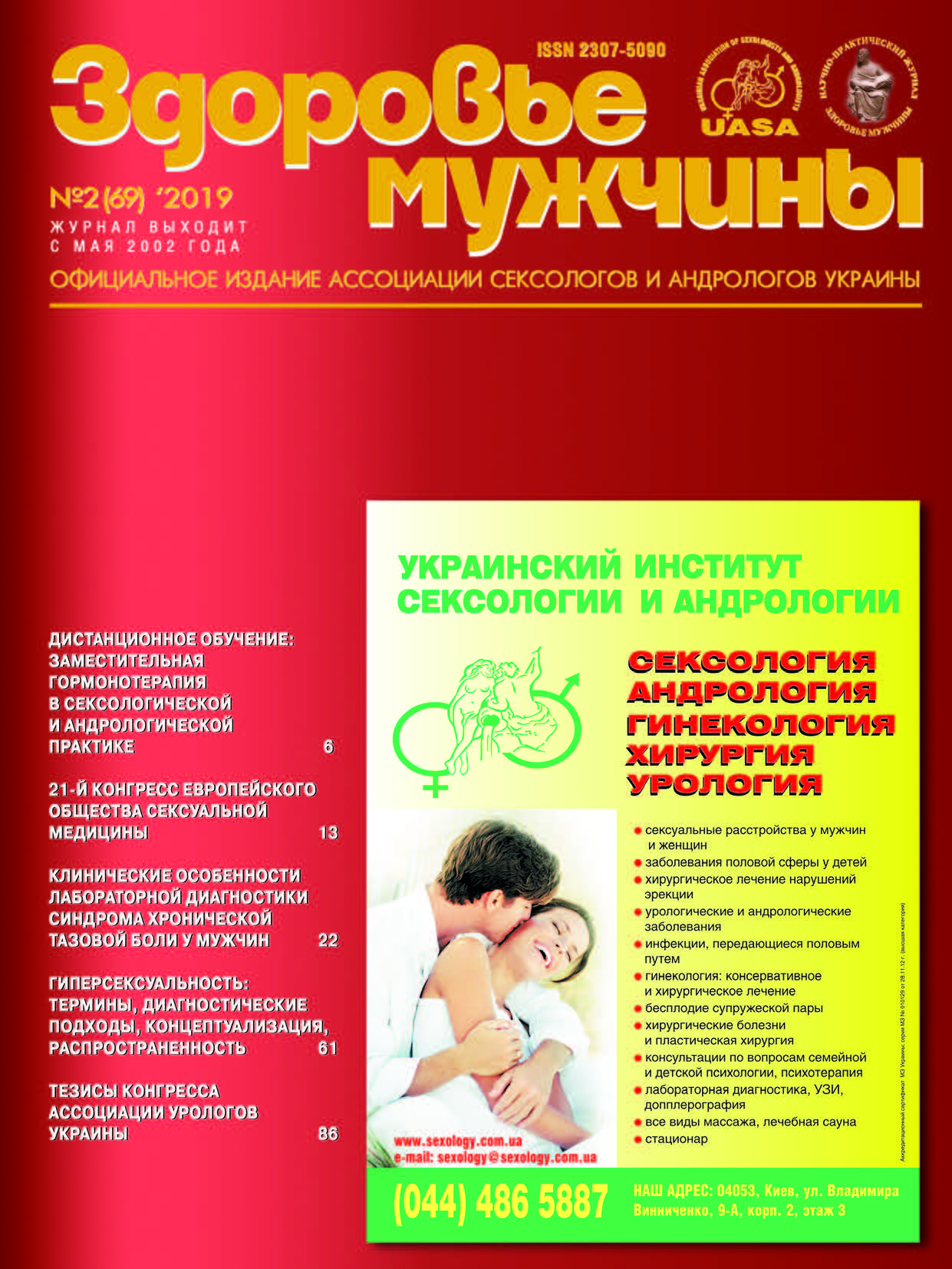Methods of Biofeedback as a Factor in Improving the Effectiveness of Correction Functional Disadaptation of the Muscles Pelvic Floor in Patients with Non-neurogenic Hyperactive Bladder
##plugins.themes.bootstrap3.article.main##
Abstract
The objective: was to assess changes in electromyography (EMG) parameters in women with overactive bladder (OAB) and explore the possibility of correction adaptive capacities of the bladder using biofeedback (BFB) in conjunction with ETS (EMG trigger electrical stimulation) muscles of the pelvic floor.
Materials and methods.The study involved 73 women with symptoms of OAB. The study of EMG dysfunction symptoms striated perineal muscles and pelvic sphincter apparatus were installed in 78.2% of women with emergent form of urinary incontinence.
Results. In women with a “sensory” symptoms OAB without incontinence dysfunction of muscles of the perineum and sphincter apparatus were installed in 36.8% and 53.4% of patients with algic syndrome.
Conclusion. Also found that the application of the method of BFB in combination with ETS indicators sphincter muscle of the pelvic improved after 2 weeks in 52 % of patients after 4 weeks of EMG indices improved in 61 % of patients, and by the 15th class progress as in the muscle work recorded in 68% of patients.##plugins.themes.bootstrap3.article.details##

This work is licensed under a Creative Commons Attribution 4.0 International License.
Authors retain the copyright and grant the journal the first publication of original scientific articles under the Creative Commons Attribution 4.0 International License, which allows others to distribute work with acknowledgment of authorship and first publication in this journal.
References
Buckley BS, Lapitan MC, Epidemiology Committee of the Fourth International Consultation on Incontinence, Paris, 2008. Prevalence of urinary incontinence in men, women, and children-current evidence: findings of the Fourth International Consultation on Incontinence. Urology 2010; 76:265.
Management Recommendations. In: Incontinence, 4th ed., Abrams P, Cardozo L, Khoury S, Wein A. (Eds), Health Publications, Paris 2009. p.1774.
Diagnosis and treatment of overactive bladder (non-neurogenic) in adults: AUA/SUFU Guideline / E.A. Gormley, D.J. Lightner, K.L. Burgio [et al.] // 2012 May. American Urological Association.
Tikkinen K.A. Does the Imprecise Definition of Overactive Bladder Serve Commercial Rather than Patient Interests? / K.A. Tikkinen, A. Auvinen // Eur Urol. – 2012 Apr;61 (4):746-8; discussion 749-50. Epub 2012 Jan 5.
DuBeau CE. Treatment of urinary incontinence. In: UpToDate. Basow DS (Ed), UpToDate, Waltham, MA, 2012.
Benefits and harms of pharmacologic treatment for urinary incontinence in women: A systematic review. / T. Shamliyan, J.F. Wyman, R. Ramakrishnan [et al.] // Ann Intern Med. 2012 Jun 19;156(12):861-874.
EAU guidelines on urinary incontinence / J.A. Thüroff, P. Abrams, K.E. Andersson [et al.] // Eur. Urol. – 2011 Mar; 59(3):387-400.





